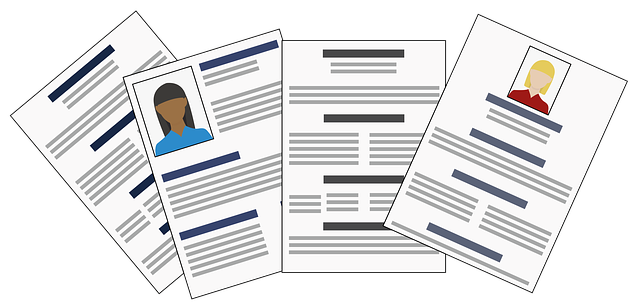 The Alex Murdaugh trial has garnered much attention in recent days, and for good reason: a public figure with a lot of money is tried and convicted of a vicious crime. As with many criminal trials in popular culture, the demeanor of the defendant has received a lot of attention.
The Alex Murdaugh trial has garnered much attention in recent days, and for good reason: a public figure with a lot of money is tried and convicted of a vicious crime. As with many criminal trials in popular culture, the demeanor of the defendant has received a lot of attention.
In this brief blog, I’d like to discuss a little bit about how reading people and the analysis of body language can help get greater insights into the minds of others. At the same time, I’d like to discuss some of the trials and tribulations of doing so without a solid empirical and experiential basis.
First of all, we should acknowledge the context within which we are observing behavior, which is a trial of a public figure that is being televised. In such a trial, questions and responses are often practiced and polished before they are raised in the court.
Oftentimes the questions that are asked are fixed and those asking questions don’t have the freedom or the luxury to go wherever they want to, as in a free-flowing investigative interview.
The astute observer should realize that reading behavioral indicators of mental states is clouded by such circumstances. That is very different than a spontaneous investigative interview conducted behind closed doors outside of public and television view.
“Anywhere, Anytime”
Many people have commented on the defendant’s verbal answer that he did not kill his wife and son “anywhere, anytime.” (see 0:19 in the video above)
Certainly the use of such language raises doubt about the veracity of that statement because those adverbs seem to make it appear that the suspect is trying to convince the questioner (or the jury) of the denial.
Yet, one has to temper such interpretations because the suspect was asked whether he killed members of his family several times prior, and one of those times the attorney asking the question (in this case, the defense attorney) actually used those very same words.
Thus, when Murdaugh said those same words, it was difficult to know whether those words came spontaneously from his head or was given to him by the person asking the question. The response was contaminated by the way in which the questions up to that point were asked.
Murdaugh Head Nods
When Alex Murdaugh was asked if he killed his family, he says “No, I did not,” while nodding his head up and down.
When Alex Murdaugh was asked if he killed his family, he says “No, I did not,” while nodding his head up and down.
A body language expert can tell you that means he’s lying. His body gave away the truth while his words lied. #MurdaughTrial #Liar #AlexMurdaugh pic.twitter.com/ZYGi5EsIvS
— The Truth
(@pattykazUSA) February 24, 2023
In that same response, Murdaugh nodded his head several times when making the denial. Many people will be quick to suggest that that head nod was clearly contrary to the denial, using the head nod as a sign of deception (nodding yes while denying).
But hold on; Murdaugh nods his head almost continuously at times, even when not being asked a question or even speaking. That behavior may be a residual effect of a drug addiction.
Yes, although he is likely clean during this testimony, such behavioral effects (e.g., tremors, fidgeting, twitching, tics, etc.) can continue in individuals who have been afflicted with drugs even when they are clean. Thus, jumping on such single instances of behavior and drawing definitive conclusions is difficult and should be done with caution.
Compounding this issue is that head nods are also used to illustrate or animate speech, and not just as signs of verbal “yes” or agreement. Could Murdaugh have been nodding when denying as an emphasis of his denial rather than a contradiction?
This is the differential that I believe a cautious behavioral analyst should engage in.
Cross-Examination of Murdaugh
In fact, later when the DA was cross-examining Murdaugh, he gave a similar denial with the multiple head nods, which was a similar communication package as that described immediately above.
The problem with this other instance, however, was that the DA asked if Murdaugh had “annihilated” his family; thus, Murdaugh’s head nods could be an emphasis of his denial given the explosive nature of the word in the question itself.
Compounding all of this further were the vehement and somewhat emotional ways questions were addressed to Murdaugh by both his attorney and the DA. When interpreting behaviors associated with responses in such situations, it becomes very difficult to separate the behavioral signs of mental states related to his own state of mind and its contents and his reactions to the emotional ways in which the questions were being delivered.
Would Murdaugh have produced a different package of behavior with the denial if he were asked calmly or with less vocal intensity? Probably so.
Thus, attempts to analyze the situations above, and others like it, are difficult and sometimes futile because they are somewhat contaminated by context and the demeanor of the questioners themselves.
As a result, we have to look elsewhere in his testimony for demeanor that is clearer and can clean up some of these differentials in interpretation. In fact, those existed. (Can you find them?)
My point is this blog is that sometimes reading people and using behavioral indicators of mental states are not as easy as some portray. By the way, in our workshops, we provide the kind of textured and nuanced way of reading people that is especially effective for interviewers.
The post Analyzing Alex Murdaugh’s Body Language first appeared on Humintell.
 Are we confusing cues of low credibility with atypical behavior of people with mental health issues?
Are we confusing cues of low credibility with atypical behavior of people with mental health issues?
 Another indicator of trustworthiness is emotional expressions.
Another indicator of trustworthiness is emotional expressions. In another study, authors examine the effect of four cues commonly associated with lying: gaze aversion, repetitive body movements, monologues, and flat affect. These behaviors are selected because they are associated with lying and also because they often appear in people with mental health problems.
In another study, authors examine the effect of four cues commonly associated with lying: gaze aversion, repetitive body movements, monologues, and flat affect. These behaviors are selected because they are associated with lying and also because they often appear in people with mental health problems. Have you ever conducted an interview and were unsure if the individual was being 100% honest? If so, then this article is for you!
Have you ever conducted an interview and were unsure if the individual was being 100% honest? If so, then this article is for you! According to the Society of Human Resource managers, 53% of people lie on their resume. So, that means more than half of the people you interview will have inaccurate information on their resume/application.
According to the Society of Human Resource managers, 53% of people lie on their resume. So, that means more than half of the people you interview will have inaccurate information on their resume/application. You can do this by placing a ‘DO NOT DISTURB’ sign on the door, turning off your mobile phone, asking them to turn their phone off and/or unplugging any landline phones in the interviewing area.
You can do this by placing a ‘DO NOT DISTURB’ sign on the door, turning off your mobile phone, asking them to turn their phone off and/or unplugging any landline phones in the interviewing area. You should be doing 20% of the talking as they should be doing 80% of the talking, which can be accomplished by asking open ended questions.
You should be doing 20% of the talking as they should be doing 80% of the talking, which can be accomplished by asking open ended questions. An honest person will usually speak with confidence and in a timely manner to the question being asked. Using the example above, an honest person after hearing the question “Tell me about a time you were terminated by one of your previous employers.” will quickly reply; “I’ve never been terminated!” if they in fact have not been.
An honest person will usually speak with confidence and in a timely manner to the question being asked. Using the example above, an honest person after hearing the question “Tell me about a time you were terminated by one of your previous employers.” will quickly reply; “I’ve never been terminated!” if they in fact have not been. Please keep in mind when reading body language, the markers or ‘tells’ mentioned below must
Please keep in mind when reading body language, the markers or ‘tells’ mentioned below must 